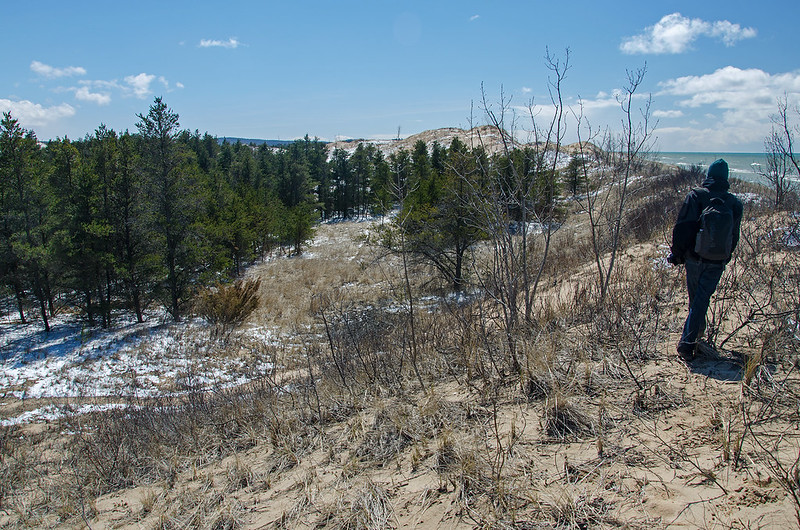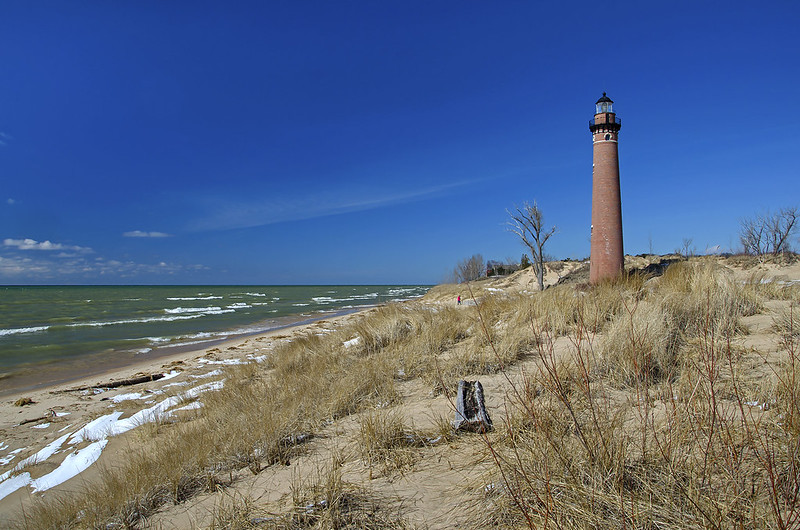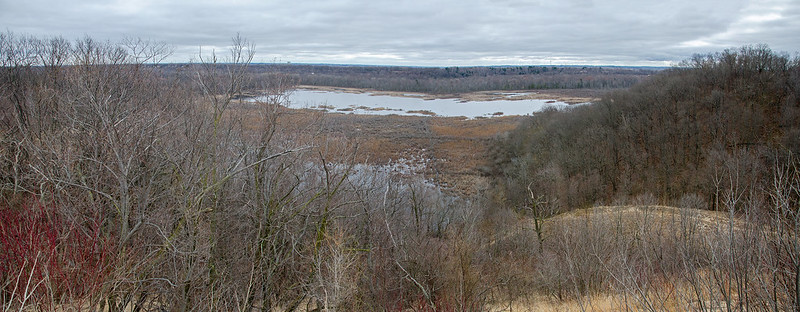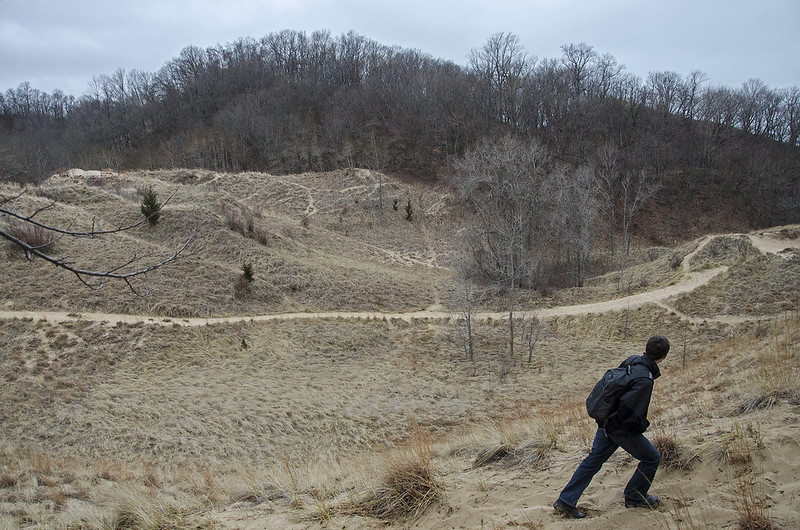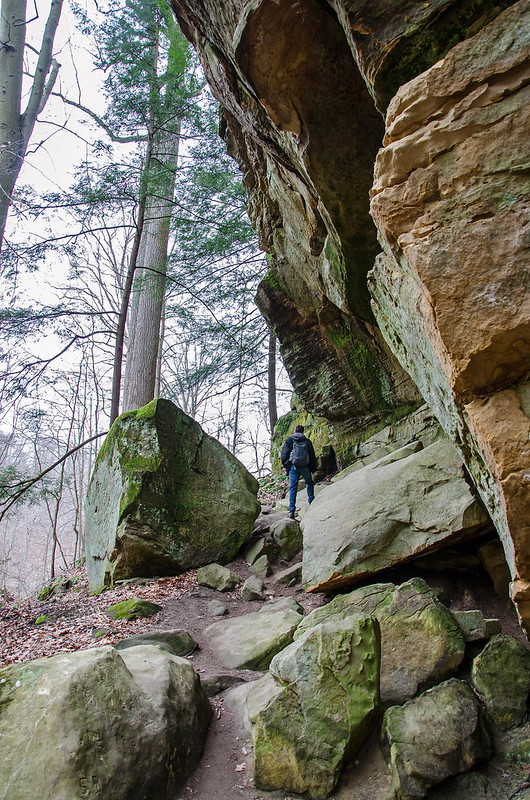
Our morning hike began on trail 3, one of the more rugged trails of Turkey Run State Park. On previous visits, we exited the trail at the Ice Box, but this time we decided to begin at the Ice Box. Taking the trail in reverse would give us a different perspective of the trail.

The warm weather allowed us to hike to the bank of Sugar Creek on our way to the canyons. Dozens of canoes and kayaks floated by in the few minutes we explored the bank. Swallows swooped down near us as we walked beneath their mud nests clinging to the underside of the canyon walls.
From the creek, we hiked up the steep bank toward the Ice Box. Immediately we noticed the dramatic drop in temperature, almost as if we were entering a cave system. Only a bit of water flowed from the canyon above, dripping on the logs and rocks below, but enough to get the camera gear wet if we weren't paying attention.

Eager to press on to see the rest of the canyons and waterfalls, we climbed out of the Ice Box. Large, exposed tree roots clung to the rugged canyon walls, creating a makeshift set of stairs for us to use. Because we were taking the trail in reverse this time, climbing up this "staircase" was easier but more dramatic than heading down.


















